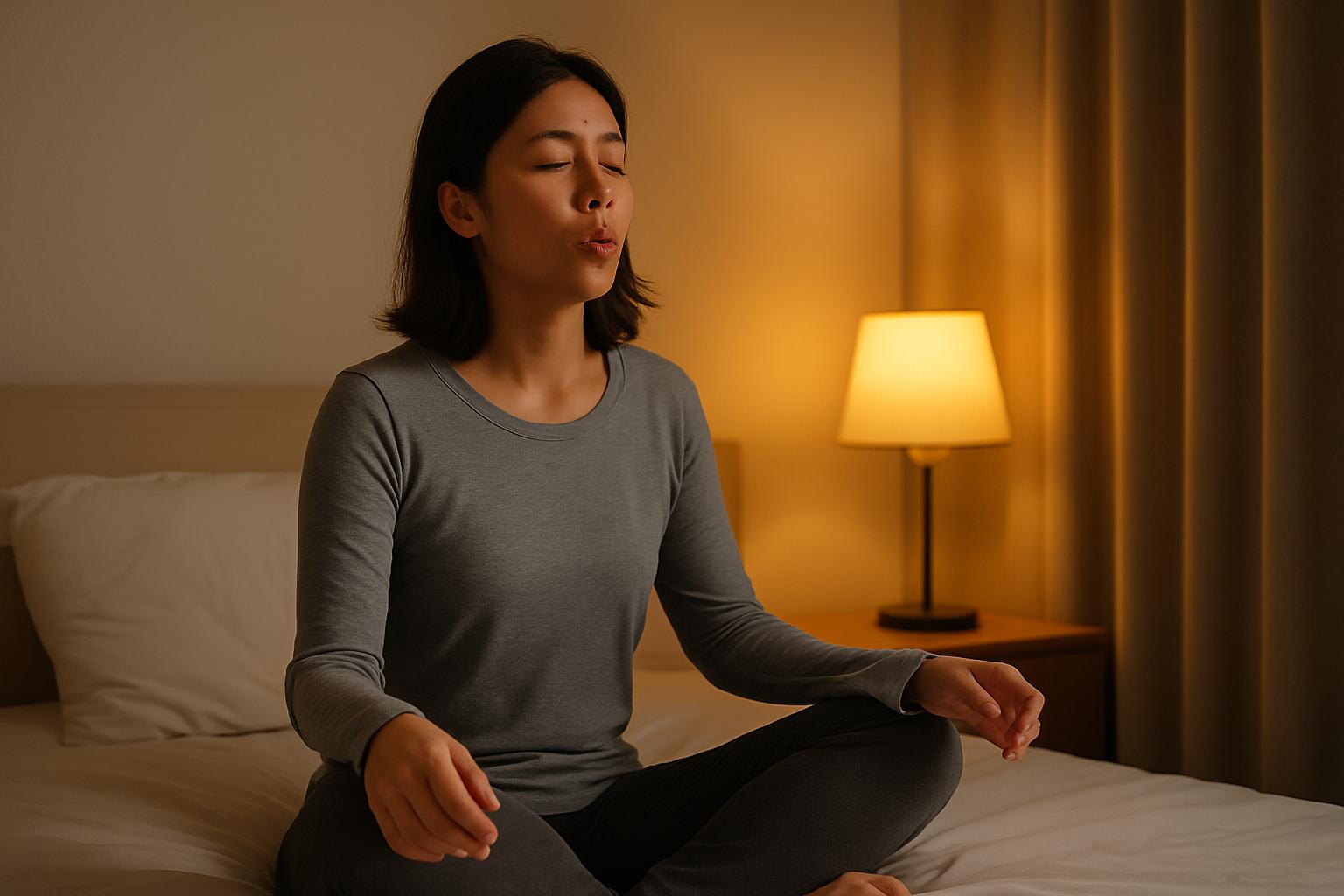Have you been feeling an uncomfortable pressure or tightness in your chest? Perhaps even pain, numbness, tingling sensations, difficulty breathing, or nausea that accompany it? Then you may be experiencing chest pain. When we experience this, many of us will automatically think of the worst-case scenario: a heart attack. While it may be a possibility, it is not always the case. Millions of people go to the emergency room every year for chest pain, but only 20% are diagnosed with a heart attack or unstable angina. Most had a condition not related to the heart or arteries. If this sounds like you and you have had recurring chest pain with no relief, you can consider treating it with acupuncture. This therapy involves treating acupressure points for chest pain that are low risk but can be extremely beneficial for your health as a whole.
What Causes Pain In The Chest?
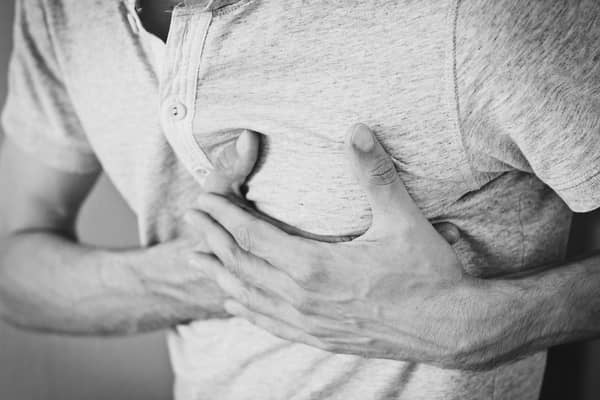
Everyone experiences chest pain differently, and that’s because there can be more than one cause. Many times, it can be cardiac-related, but issues stemming from the lungs, esophagus, muscles, or ribs can also cause chest pain. Some of these are life-threatening, and others are not. The following are some of the causes of chest pain:
- Heart attack. Also known as a myocardial infarction. This condition occurs when blood flow to part of the heart is blocked. The less blood flow, the more damage there is to the heart muscle. Chest pain is a major symptom of a heart attack and involves significant discomfort on the left side of the chest.
- Angina. This is a common cardiac condition that causes pressure or tightness in the chest. Those who have experienced it described it as someone squeezing their chest or having a heavy weight on it.
- Acid reflux. In your stomach, there is a muscle that normally closes when food passes through. However, if it doesn’t close all the way or opens often, then your stomach acid can move up into your throat and cause what many know as acid reflux. Chest pain occurs as a result of heartburn from the acid moving up from the stomach and into your chest.
- Pneumonia. In this condition, your lungs are affected by an infection that causes inflammation and fluid build-up in the air sacs. Bacteria, viruses, and fungi usually cause pneumonia. Chest pain is a common symptom, especially when you breathe or cough.
- Muscle strain. Hard coughing or external trauma can injure or irritate the muscles/tendons that make up your chest and ribs. The pain often worsens with movement.
- Anxiety. While feeling worried or nervous is normal, it can lead to anxiety if experienced frequently and manifest in physical symptoms. Chest pain is commonly experienced in anxiety but can be different for every person. Some describe it as sharp, shooting pain, while others have experienced a stabbing pressure.
The above conditions are only some of the many causes of chest pain. If this is the first time you’re experiencing chest pains or if they are feeling different compared to before, then make sure to get a doctor’s opinion first and a clean bill of health before considering treatment options.
Can Acupuncture Help Chest Pain?

If it has been officially determined that your chronic chest pains are non-life-threatening, then you may be wondering what your treatment options are. Depending on the cause, you can be treated with medications or surgery. But sometimes, even these interventions are not enough. Recently, acupuncture has emerged as a new alternative treatment for people who suffer from all sorts of conditions, including chest pains. Originating from traditional Chinese medicine, acupuncture is the practice of inserting thin needles at various acupressure points (also known as “acupoints) on the body. Acupuncture practitioners believe that the body has a natural qi, or energy flow. Qi can become imbalanced when you’re sick or in pain. The goal of acupuncture is to restore this energetic balance by stimulating acupoints.
But is it effective for chest pains? Science claims that acupuncture can be a great complementary therapy for angina pectoris, but cannot entirely replace conventional treatment. The main issue with treating angina pectoris in Western medicine is that patients can become too dependent on drugs, resulting in side effects and drug resistance. Treatment of the acupressure points for chest pain along with conventional drug therapy helps reduce chest pain symptoms and reliance on drug therapies. Acupuncture helps you bypass most of the unpleasant effects of these medications and does not interfere with the drugs you’re already using to treat angina pectoris or other cardiac problems.
What Are The Pressure Points For Chest Pain?
Acupoint: Bl-12 (Other Names: Urinary Bladder-12/Feng Men/Wind Gate)
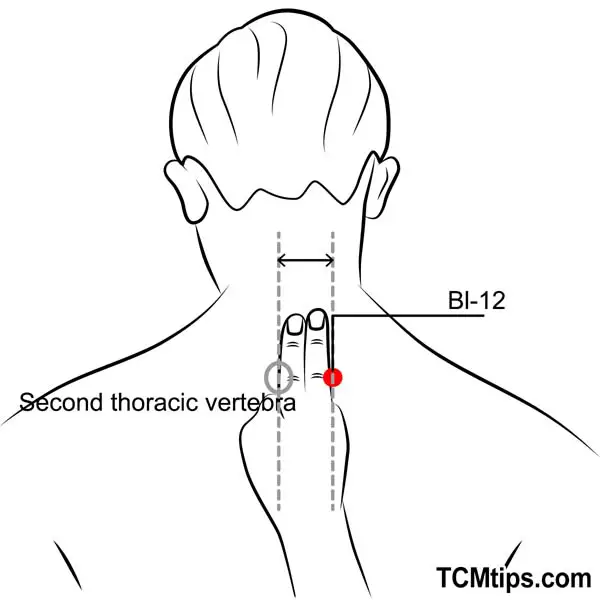
Bl-12, also known as “fengmen” or “wind gate”, is located on the upper back, below the spinous process of the second thoracic vertebra and about 1.5cun lateral to the spine. This acupoint is great for chest pain resulting from strained muscles from exercise or any other physical activity. It is also one of the acupressure points for asthma.

Whenever my chest muscles hurt or my back is stiff. My favorite trick is to take a bath to warm my body and remove any stiffness. The acupuncture points that are effective for chest pain are lined up vertically along the spine around the inside of the shoulder blades. Slowly soak in a little lukewarm water to warm your body, then use a cold shower around the acupuncture points on your back. If you apply hot water (not too hot!), lukewarm water, and cold water 5 to 6 times in this order, the blood circulation in your back will improve and you will get rid of chest pain. It is also the basis of acupressure therapy to get rid of the tiredness of the day instantly.
Acupoint: Bl-13 (Other Names: Urinary Bladder-13/Fei Shu/Lung Transporter)

Bl-13, also known as “feishu” or “lung transporter”, is also located on the upper back, but is a bit lower than Bl-12. Bl-13 is located 1.5 cun beside and below the spinous process of the third thoracic vertebra on the back.
It works similarly to Bl-12 to help relieve chest muscle pain with a greater emphasis on relieving lung issues as it is one of the best acupressure points for lungs.
Acupoint: LU-1 (Other Names: Lung-1/Zhong Fu/Middle Palace)
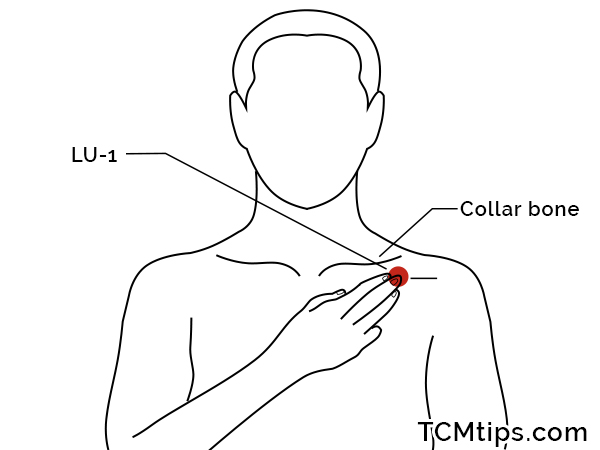
LU-1, also known as “zhongfu” or “middle assembly”, is located on the upper chest, 6 cun from the midline of the chest, and beneath the collar bone. Treatment of this acupoint not only eases tightness in the chest, but also helps relieve all of the factors that could be causing it, such as coughing, asthma, and grief. You also use this as one of the acupressure points for upper back pain.
Acupoint: Ren-12 (Other Names: The Conception Vessel-12/Zhong Wan/Middle Epigastrium)

Ren-12, also known as “zhongwan” or “middle epigastrium”, is located in the center of the upper abdomen, 3 cun above your belly button and specifically on the line connecting the epigastrium and the navel. Treat Ren-12 if you’re looking for how to get relief from chest pain due to gas, such as in acid reflux. It is also one of the acupressure points for indigestion.
Acupoint: PC-6 (Other Names: Pericardium-6/Nei Guan/Inner Pass)
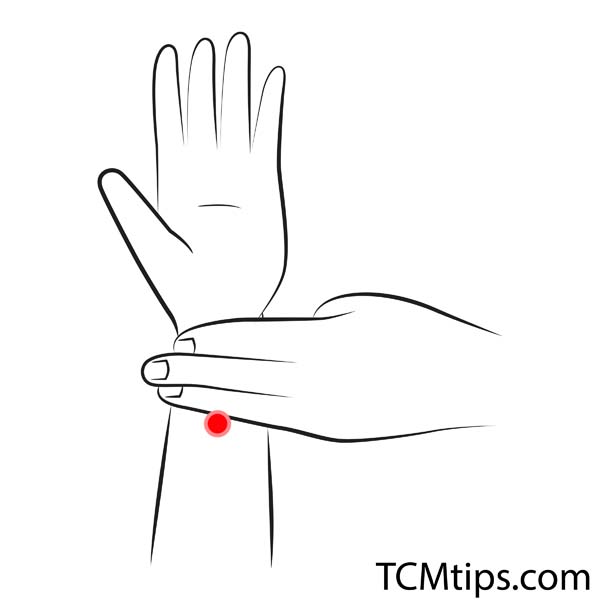
PC-6, also known as “neiguan” or “inner pass”, is located about three fingers below the inner wrist. It helps open the chest and regulate heart qi, which alleviates cardiac pain due to angina. An angina attack is a mild, squeezing pain that lasts from a few seconds to a few minutes. An angina attack is a less severe, but still dangerous illness. Acupoint therapy is just a first-aid measure. Be sure to see a specialist. If you’re also feeling down, you can use this as one of the acupressure points for depression.

Try our Anti-Aging Gua Sha Tool designed to bring out your skin’s natural glow.
Best Gua Sha Product- Anti-Aging: The tool is designed to target 11 specific aging signs such as wrinkles and sagging skin. By following the 7-step routine, users can improve skin firmness and reduce fine lines naturally.
- Enhances Skincare Routine: It works effectively with serums and lotions, boosting absorption and efficacy of skincare products.
- Visible Skin Improvement: Users can expect a smoother complexion, reduced puffiness, and a more youthful appearance.
 P. Sze
P. Sze 






